Manhunter: The Story of the Swedish Occultist and Serial Killer Thurneman
2021-06-30
by Niklas Göransson
Manhunter is a true-crime book delving into the history of The Magical Circle, an outlaw gang responsible for several spectacular murders in 1930s Sweden. Co-author Wulvaricht discusses the group’s enigmatic leader, Sigvard Thurneman.
This article can also be found in Bardo Archivology Vol. 2, a printed anthology with selected features from the online archive. Additional content includes NÅSTROND, VOMITOR, NOCTURNUS, XIBALBA ITZAES , Ryan Förster, ANGELCORPSE, THE RUINS OF BEVERAST, ASCENSION, MALOKARPATAN, WARDRUNA, LIFVSLEDA, FORGOTTEN WOODS, SEIGNEUR VOLAND, and WOLCENSMEN – all presented in ambitious aesthetics with plenty of custom artwork. More information here.
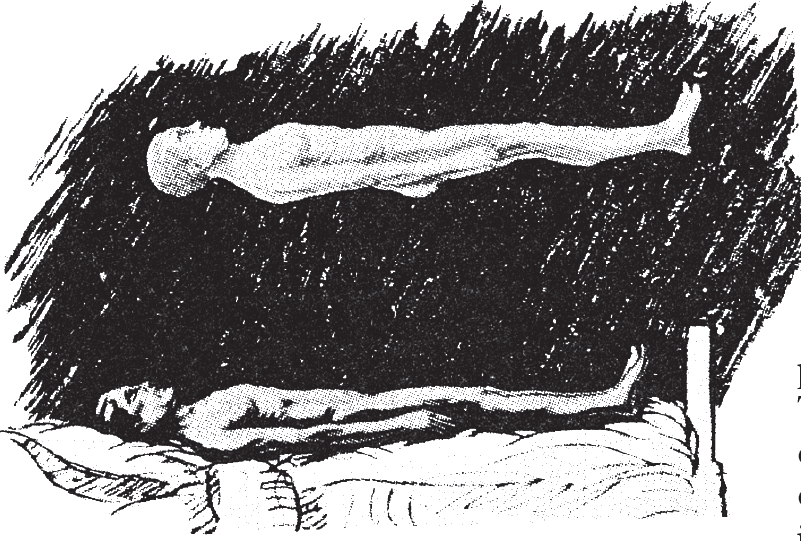
– It’s interesting to note that, despite the several books and numerous newspaper articles written about him, Sigvard Thurneman remains largely unknown to the general public. The likely reason for this is that none of the authors were able to truly capture his essence. They focused exclusively on Thurneman’s criminal deeds and only briefly, in a few words, covered his esoteric ideology. Consequently, Den Magiska Cirkeln (‘The Magic Circle’) has become a common true-crime saga without much deeper meaning.
Before the 2013 book that Wulvaricht co-authored was brought to my attention, I’d never heard of Sigvard Thurneman – the leader of a criminal gang which committed a number of murders in 1930s Sweden. I asked several friends as well as my father; none of them were aware of him. Therefore, it was with great interest I read the original version of Manhunter: The Story of The Swedish Occultist and Serial Killer Thurneman, which has now been translated into English and published by The Ajna Offensive.
– I first heard of Thurneman from a friend back in the 90s, but I ended up forgetting about him for many years until, one day, I came across an article online. I then borrowed a few true-crime books covering the case and soon realised that there were far more profound aspects to Sigvard Thurneman and his organisation, Den Magiska Cirkeln, than what first meets the eye. My co-author and I soon concluded that he was linked to the Left-Hand Path – as an actual practitioner. This notion would later be confirmed when we began delving into the archives and came across many statements about black magic and the dark side. What we read in the documents inspired us to write a book about him. Since the other authors lacked the knowledge and ability to convey all the complexities surrounding these events, our idea was to write a more in-depth book addressing both Thurneman’s criminal deeds and their underlying esoteric implications.
Have you had access to any documents other researchers did not?
– To be honest, I doubt they’ve read any relevant documents at all. There are exceptions, but most of them appear to have taken a great deal of their information from old newspaper clippings – sometimes just settling for re-writing older books which, in turn, were based on media coverage. Much of the documentation has never been digitised, so my co-author and I travelled all across the country. We visited the National Archives in Stockholm, where they keep the several thousand pages long police investigation. In addition, we found multiple photos of DMC members which had never been published before. At the National Board of Forensic Medicine, we obtained Thurneman’s psychiatric evaluation; it was during these interviews he outlined his metaphysical views. We also visited the archives of the Swedish Security Services, as they had some information about Thurneman’s connection to a Third Reich spy operating in Sweden during the 1930s.
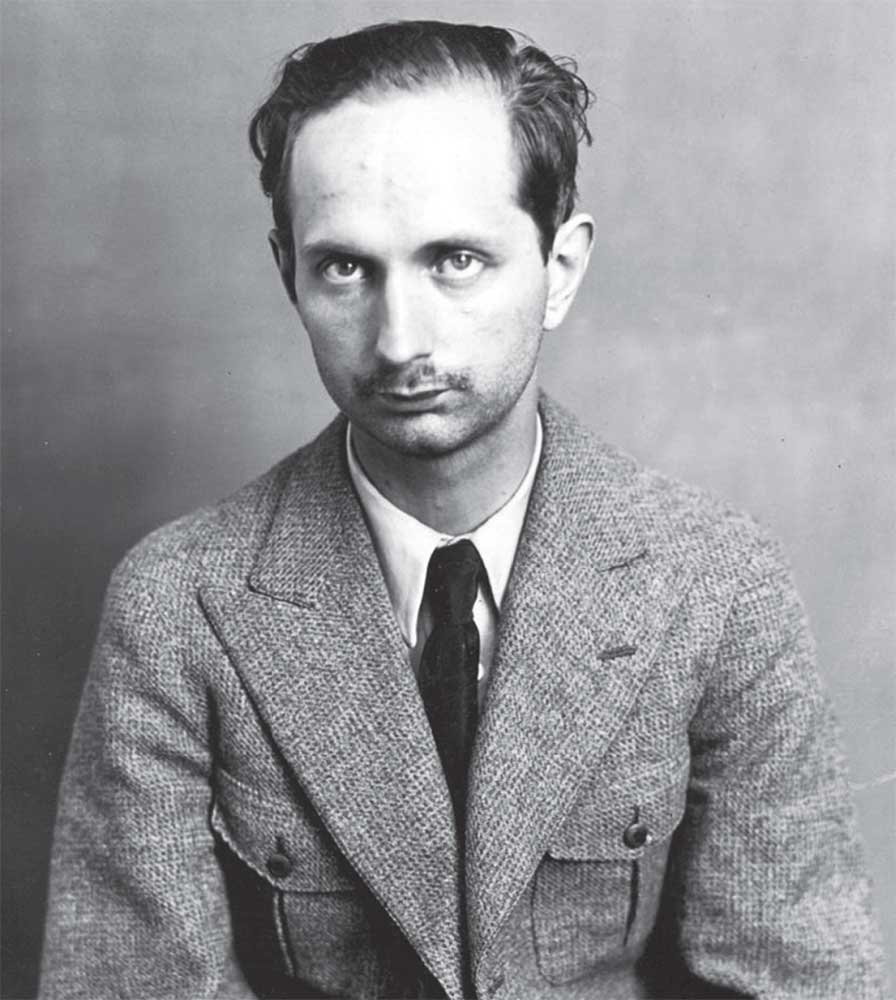
The second half of the book contains a lot of musings over esoteric concepts relevant to the case – did you consult any experts in the field?
– Both my co-author and I have been active practitioners of Left-Hand Path related magic for many years now, so we were already sufficiently knowledgeable. The only expert we involved was a friend of mine who is a professor of religious history at the University of Gothenburg; he fact-checked the book for us and provided feedback and commentary. I have some academic experience, but not in religion. I’ve studied both terrorism and counterterrorism at the university level, which is helpful when it comes to understanding the group dynamics which characterise violent and radical groups such as DMC. My co-author has studied ethnology and Hinduism at university – also highly useful, given that Thurneman was into a lot of Eastern religion.
Sigvard Thurneman grew up in a small town called Sala, 120 kilometres (75 miles) northwest of Stockholm. He is known to have taken a keen interest in esotericism during his early teens and read several books on theosophy, telepathy, and hypnosis. However, it’s clear that a pivotal turning point in his life was meeting an enigmatic Dane in 1924.
– Karl Andersen was a yoga master from Denmark, he represented the Danish chapter of Den Magiska Cirkeln. When visiting Sala, Andersen spotted a sixteen-year-old Thurneman sitting in a cafe drinking mineral water – he walked up to the young man and pointed out that he had a very strong hypnotic charisma. Andersen went on to say that he wanted to teach Thurneman hypnosis and yoga, thus enabling him to use his natural talents to their full potential.
What kind of yoga was this?
– Nothing like what you’d learn today. Going to a kundalini yoga class in nowadays Sweden means performing a lot of asanas, or postures, as if it was a regular workout session. Essentially, you do everything but wake up the kundalini energy, because the instructors consider this moment too dangerous. It all turns into more materialist gymnastics than any genuine spiritual practice. Thurneman, on the other hand, was a hardcore true believer in the power of tantra. Unlike many of today’s self-proclaimed Swedish ‘yoga masters’, he practised four to five hours per day.
To enhance both his yogic practice and astral travelling, Thurneman would use black henbane, Hyoscyamus niger – a plant with a long history of applications ranging from the medicinal to religious worship and witchcraft. He also used incense made from an interesting combination I’ve never come across before: equal parts henbane, sandalwood, and camphor.
– Sandalwood and camphor were used to hide the scent of henbane during the rituals. It should also be noted that camphor is often used in ceremonies dedicated to the tantric goddess Kali. The Swedish name for henbane is bolmört, which translates to ‘smoke-herb’. The most common means of ingestion is inhaling it as smoke, but Thurneman chose to crush the seeds with a mortar and pestle – they were then left in an alcohol solution for a few weeks, which produced a concentrate he could inject with a syringe.
I’ve studied henbane rather intensely and have never so much as heard of anyone injecting it. I honestly wouldn’t have believed this claim, had it not been mentioned in the police report. During the raid of Thurneman’s home, constables found syringes, henbane seeds, and extractions thereof. As with all psychoactive plants from the nightshade family, calculating henbane dosage is a fine line between oracular ecstasy and psychological trauma – even physical death. So, that anyone would learn through trial and error using injections of an extract sounds highly unlikely. Someone must have taught him this.
– Likely Karl Andersen, the Danish magician. In 1929, Thurneman was invited to Denmark where he underwent an inauguration rite into DMC. In addition, he was ordered to start a local branch in Sweden. Andersen‘s plan was probably to expand DMC into an international esoteric operation; however, he does not appear to have intended for the organisation to carry out any illegal acts. Taking the Swedish branch on the criminal path seems to have been more of a personal initiative by Thurneman himself. He went rogue, so to speak.
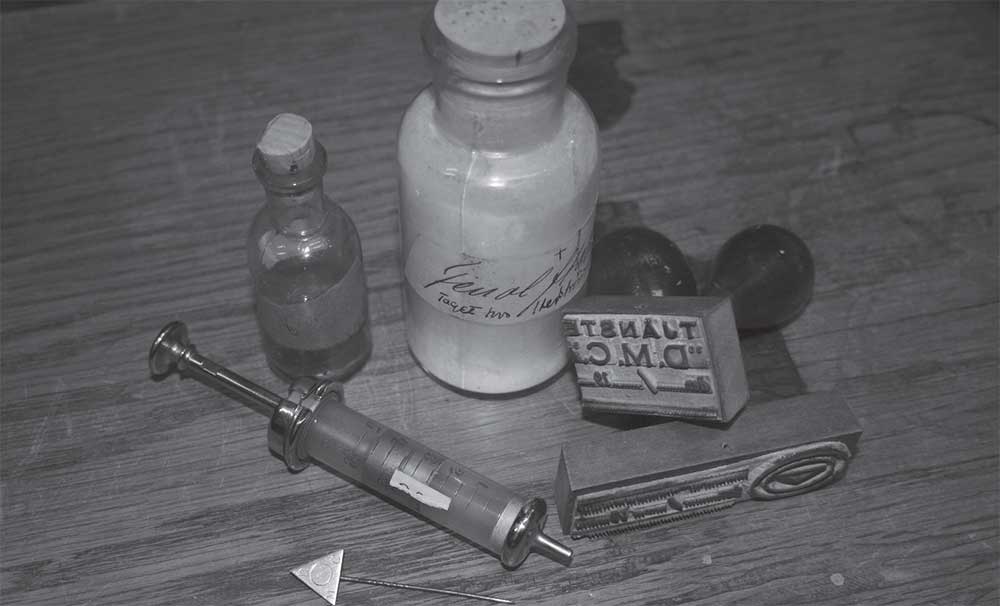
It should be noted that, despite a thorough investigation, Danish police were never able to confirm the existence of Karl Andersen. However, Thurneman clearly learned several advanced esoteric techniques which would have been difficult to pick up, let alone master, from books alone. Both his father and sister told investigators they’d met a Dane in their garden one day around 1924, but never caught the man’s name. Thurneman’s mother remembered that he began speaking of ‘training the soul’ after this meeting. He is also known to have visited Denmark for four days in November 1929, but exactly what he got up to is not proven one way or another. Thurneman’s father later noted to a friend that his son was under ‘a devilish influence’ from an unknown Dane – he had changed completely, as if bewitched. Reading the book, it struck me as somewhat odd that Thurneman spoke so openly about Andersen to the police; one would think that he’d want to keep his supposed mentor and master out of this mess. Interestingly, Wulvaricht learned something during his research which could potentially explain this peculiarity.
– When my co-author and I researched the book, we visited Sala to inspect sites related to DMC’s activities. We found out that his house still existed and went there. Upon entering the garden, we spotted an elderly man half-sleeping in a chair in the summer heat. I approached and asked him if we were at the right place: if the house had been owned by Sigvard Thurneman. He immediately stood up in a position of attention, as if the very name was some kind of trigger word to activate a post-hypnotic state. The ninety-three-year-old man became highly alert and told me with passion that ‘Thurneman was a great asset to the city.’ They were friends, but the man denied having ever been a member of DMC – however, he claimed to have witnessed the hypnosis sessions. He brought out a truncheon that apparently belonged to Thurneman; he’d found it in the attic after they moved in. It was his father who bought the house from Thurneman’s family. He also showed us a Hindu ritual knife hidden inside his jacket. According to his own words, he intended to use it to kill anyone who tried to rob him. Both of us got the impression that the man knew more about DMC than he was letting on. One thing he did say was that Thurneman had murdered his teacher, Karl Andersen, and buried him in the woods. The reason for this was that Andersen had learned of the serious crimes committed by the Swedish DMC and wanted to distance himself from them. Thurneman feared that his old mentor would provide information to the police and so decided to take him out.
After conceptualising and founding the Swedish DMC, Thurneman’s primary recruitment tools were the hypnosis sessions and occult get-togethers he facilitated in his home. As it turns out, enlisting in this fashion attracts somewhat different characters than the usual suspects one would associate with a criminal syndicate; the cadres of DMC consisted mostly of men who were both intelligent and of otherwise reputable character.
– Thurneman wanted DMC to be an elitist organisation made up by bright individuals with talents in the paranormal. As such, hosting esoteric meetings was an efficient method. Turning upstanding and socially respectable men into criminal accomplices wasn’t difficult for Thurneman, who was highly charismatic as well as an expert in identifying people’s weaknesses – observations he would then use to exploit and manipulate them. He lulled his underlings into an amazing dreamworld by weaving spellbinding tales of what life would be like if they followed him. In the judicial aftermath, the other members denied before the court that they were ideologically convinced; instead, they claimed to have been weak-willed instruments under Thurneman‘s hypnotic power.

In Manhunter, Wulvaricht argues that the metaphysical aspect is crucial to understand when trying to make sense of how and why all this happened; that Thurneman was not a criminal with eccentric interests, but rather an esoteric devotee with a complete disregard for secular law. I’ve read a number of other writings on this topic now and, as my interviewee points out, none of them place much emphasis on the magical elements. The general consensus seems to be that DMC as an occult order was merely a figment of Thurneman’s imagination – one he used to manipulate and frighten members into doing his bidding.
– Again, they have had an extremely limited understanding of the deeper spiritual doctrines. Hence why it’s been so convenient for them to dismiss Thurneman‘s ideology as some kind of exotic hobby, rather than revealing their own ignorance by attempting to write about it. Thurneman himself explicitly stated – in both the police interrogations and his psychiatric evaluation – that he was acting on orders from spiritual forces when carrying out the murders. But sure, if individual members disobeyed commands, he’d often use threats of capital punishment from DMC’s internal court. Thurneman was not driven by greed; he came from a wealthy family and engaged in alternative medicine and homeopathy, which were lucrative businesses. So, he had no need to carry out robberies in order to acquire money. There were murders where he didn’t even take any of the victim’s belongings.
One such murder was Thurneman’s first, which took place on his twenty-second birthday: November 14, 1930. According to his patient journal from Säter mental asylum, he had received a message – while in trance, during a séance – that the kill had to take place twelve hours after the time of his birth. Using a fake name, he called for a taxi to come pick him up. Once they reached a secluded spot outside town, he asked the driver to slow down. When the vehicle had almost come to a complete stop, Thurneman pulled out a pistol and shot him in the neck.
– When I started working on the US edition, I was looking for new material to improve the release. I came across documents describing how Thurneman explained before the court that some of the murders were part of black magic rituals. Furthermore, they revealed that Thurneman had talked in even more detail about his arcane orientation during the trial. Unfortunately, it would take a lot of time to look up the transcripts of exactly what was said. The police report and legal documentation span over four thousand pages and are spread across several archives in different parts of the country. It’s not even certain that any court transcripts were made of these remarks. However, while institutionalised, Thurneman also spoke at length to a psychiatrist about his affinity for the dark arts. Additionally, in a letter to the court, the Swedish branch of The Theosophical Society identified Thurneman as a practitioner of black magic.
November 1933: members of Den Magiska Cirkeln receive a tip that the foreman of a local road construction site has collected the workers’ salaries from the bank earlier in the day. The sizeable amount of cash has been stored in a safe in his house. Once night has fallen, he is awoken by someone knocking on the window. Looking out, the foreman sees two law enforcement officers holding a shady-looking character in a trench coat at gunpoint. The constables claim to have caught a bootlegger brewing moonshine in the forest and request to use his telephone to call for a vehicle. He asks them to come around to the front door and then goes to open it. Thurneman – wearing a police uniform and carrying a rifle equipped with a home-made silencer – shoots the foreman as soon as the door opens. An accomplice, also disguised as police, finishes him off. Shortly thereafter, the maid meets a similar fate. The safe is emptied and the house lit on fire before they flee into the night. October 1934: the same trio go for another nocturnal drive, this time to a remote cabin inhabited by an old and supposedly wealthy woman. As quietly as possible, Thurneman drills a hole in her wall, into which he sticks a hose attached to the car’s exhaust pipe. On his command, the driver starts revving the engine. After about an hour, the three enter the cabin, ransack it, and then set the curtains ablaze before escaping. Just as he’s leaving, Thurneman finds himself staring into the eyes of his hapless hostess. She’s merely dazed and immobile from the fumes, not dead. He leaves the old woman to be devoured by the flames. The police subsequently rule her death an accidental fire; DMC has pulled off the ‘perfect crime’. In Manhunter, Wulvaricht points out that both heists were concluded with a bonfire around midnight.
– It’s difficult to say much about the significance of these midnight fires, because we don’t know what preceded them. For example, were there any rituals during the evening – climaxing with arson? Thurneman stated in court that their deeds contained elements of ceremonial black magic, but, without further details, it’s impossible to say for sure whether the fires were part of magical murder rituals or only meant to destroy forensic evidence.
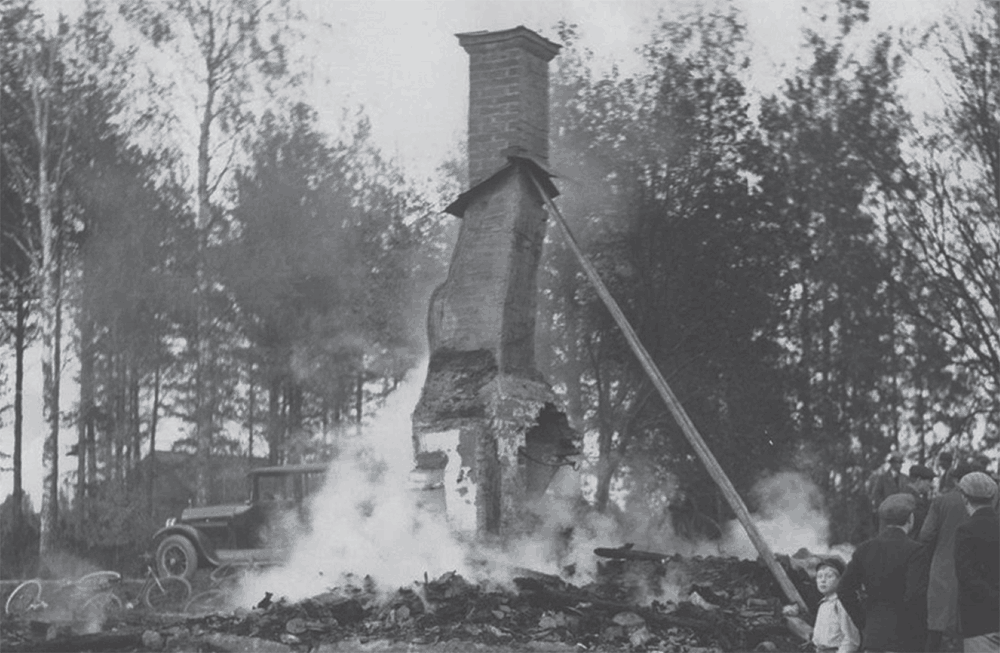
Interestingly, it was the first slaying to be entirely unconnected to magic – the June 1936 demise of a bicycle courier Thurneman gunned down in broad daylight – which broke the circle.
– According to Thurneman, the last murder was not linked to any black magic rituals; he believed that’s why they were caught. By 1936, there had been some division within DMC. Some members had tried to distance themselves from Thurneman, who they perceived to be very dominant. The spectacular daytime robbery homicide inside the city of Sala may have been a way for him to reclaim the initiative, impress the members, and show that he didn’t flinch in the face of danger.
In the book, Wulvaricht compares DMC to the Order of Nine Angles – seemingly rather prophetic, seeing as how British lawmakers are presently moving to ban the ONA as some kind of terror group.
– The similarity lies in the fact that both DMC and ONA are Left-Hand Path groups which have advocated that followers must engage in dark and illegal activities in order to establish contact with sinister cosmic forces. Both have encouraged human sacrifice, which is something most groups following the Left-Hand Path reject. It’s interesting to consider what might’ve happened if they had eluded capture; Thurneman explained that DMC would be ending the robberies and instead move into trafficking and the drug trade. In terms of black magic practice, had they not been arrested, DMC would – as Thurneman himself testified – have begun carrying out ceremonial human sacrifice.
Thurneman espoused surprisingly advanced philosophies on mortal life, alternate levels of existence, as well as the self and the soul. This is how he justified the murders, both to himself and his followers. Despite this, he was tormented for years by the memory of his first kill. Curiously, according to his patient journal, this doesn’t seem to have been about remorse over taking a life. Thurneman mostly mentions the horrid smell of blood in the car, even re-experiencing it as olfactory hallucinations. Same with the old woman in the cabin: it was the sight of her staring at him while struggling to move her hand that burned itself into his memory.
– It was probably various physical and psychological human mechanisms that caused this. Ideologically, Thurneman was absolutely convinced about the righteousness of his actions. He was extremely well-read and knowledgeable in Hindu concepts pertaining to the self and the soul, and he used them to justify the murders. Thurneman argued that even those born to the dark side still had a weaker human part within – sub-surface moral boundaries capable of inducing remorse and discomfort after serious crimes. He believed this was partly due to childhood indoctrination of societal Christian morality; Thurneman considered it a weakness to overcome and erase from the psyche. However, he freely acknowledged that he himself had not yet succeeded in this to one hundred percent. One should also remember that Thurneman did not commit any murders out of lust for killing, but because he was ordered to do so by higher powers inhabiting the astral plane. But Thurneman is quite unique in this way because he saw himself as genuinely evil: as a tool for dark acausal forces.
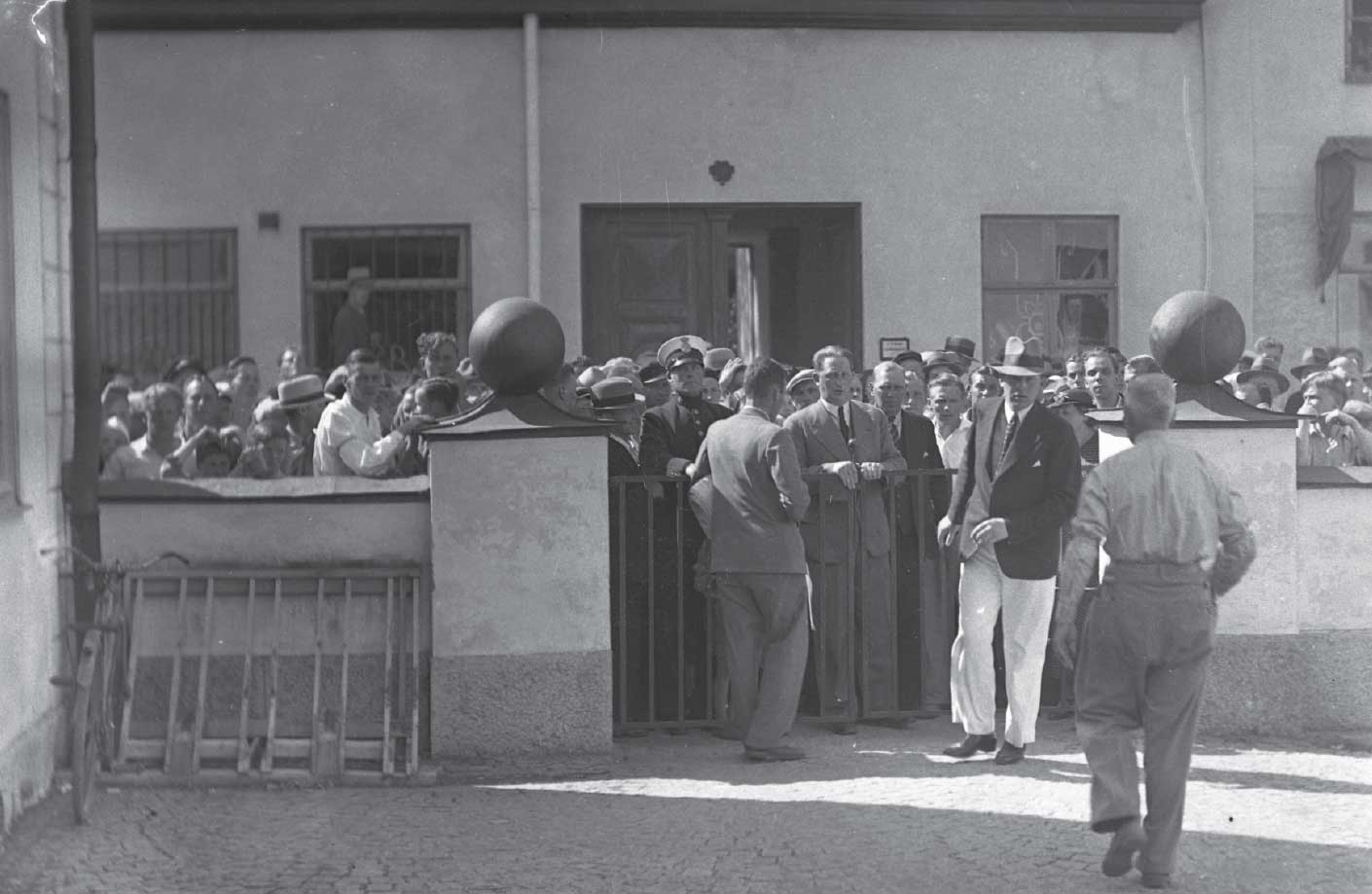
This self-identification as evil is something I’ve discussed with a number of black metal bands, such as ALTAR OF PERVERSION and NUMINOUS. Prior to modern times, no spiritual traditions are known to have praised and worshipped negativity. Not even seemingly obscure and anti-social practices such as the Aghori or darker aspects of European warrior cults existed for the appeasement and worship of malevolent gods.
– According to Thurneman, evil isn’t something you embrace as an ideology. He not only claimed that some individuals are evil by nature, but that those born to the dark side have a spiritual obligation to carry out subversive acts. This was not a question of morals, but rather part of the higher order. He argued that as long as evil acts were perpetrated at the behest of higher forces, there was nothing wrong with violating values other humans have divided into good and evil. He considered society’s rules and its secular laws to be based on Christianity, which meant non-Christians need not abide by them.
Back in the day when Thurneman grew up, Sweden was still deeply religious. It must have taken a remarkable mind to break free from his monotheistic upbringing and uproot his entire worldview.
– The Sweden of the 1930s forbade the practice of any religion besides Christianity and Judaism. Religious criticism could lead to prison sentences, or even leave you locked up in a mental asylum. Thurneman’s critique of the Abrahamic doctrine probably grew stronger as he studied Hinduism and its more advanced spiritual structures. Thurneman regarded Christianity as something that appeals to dumb people, whereas those of higher intelligence seek out the dark side of magic. I believe his childhood experiences of repeated visits by a mysterious nocturnal entity might have provided the first impulse to distance himself from Christianity.
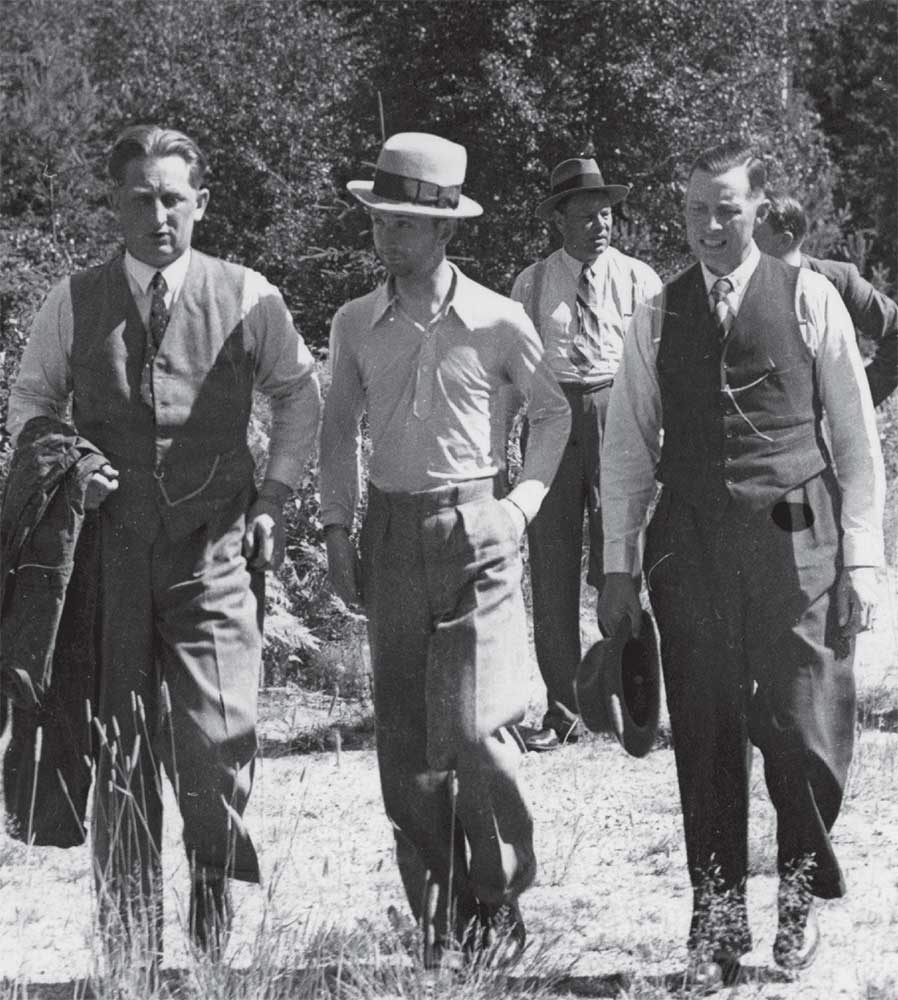
It does indeed appear as if seeing what he believed to be ‘the evil one’ at age seven was tremendously formative. Several of the visionary night-time phenomena Thurneman spoke of have been described to me by contemporary black metal musicians. Most had them during childhood, without even knowing what it was. Many say it was of immense importance for their spiritual outlook and birthed a lifelong existential curiosity. In medical terms, the condition is known as sleep paralysis. The afflicted awakens into a state of hybrid reality where the body still sleeps while the mind undergoes a waking dream. Most find this absolutely terrifying, others learn to control and even enjoy it. In the Thurneman context, it’s interesting to reflect on something he said about henbane: that it would leave him physically paralysed. He described it as if the plant allowed him to override the body’s resistance to enter a trance state. Essentially, it seems he used this concoction to re-live and explore further the nocturnal spirit flights of his childhood.
– Certainly, there are descriptions in Thurneman’s stories that appear linked to sleep paralysis, especially the episodes in his younger years before he had much knowledge about out of body experiences. That’s what sleep paralysis is: a side effect of astral projection. When the mind is projected to the astral body, there’s nothing left to ‘run’ the physical vessel and so it enters a non-functional state perceived as paralysis. The experience of having met what he understood as Satan during his celestial journeys – both in his childhood and as an adult – came to affect Thurneman‘s entire worldview. He saw this as a clear sign that he belonged to the dark side. In adulthood, Thurneman revised this stance and instead concluded that the visitor was the shadow-side of his own divine self, or Atman, which is a Hindu concept similar to the Holy Guardian Angel in Western magical tradition.
Part of Thurneman’s story, especially his adolescent healing and scrying activities, remind me of a fellow mystic that I discussed with Adam of MALOKARPATAN: Chonrad Stoecklin, a 16th-century herdsman and locally renowned folk-healer in the alpine town of Oberstdorf, Bavaria. He received his therapeutic powers from nightly trance states – described very similarly to what we today know as sleep paralysis – during which he communicated with ethereal entities. The reason why we know this in relative detail is due to transcripts from the interrogations that followed his arrest and subsequent prosecution for witchcraft.
– If Thurneman had lived in the 16th century, he would certainly have been condemned to death by the Inquisition. Instead, he was convicted by the Swedish court in a process serving as a modern-day witch trial. Since capital punishment had been abolished fifteen years earlier, Swedish authorities couldn’t sentence him to death. Rather, he was sent to a mental asylum where he remained for over thirty years. Compare this to the fact that the other members, who also participated in the murders, were only incarcerated for eight to ten years. Thurneman was not put in regular prison due to his antagonistic stance against Christianity; they feared he’d recruit other inmates and convince them to embrace his outlook on life.

This article can also be found in Bardo Archivology Vol. 2, a printed anthology with selected features from the online archive. Additional content includes NÅSTROND, VOMITOR, NOCTURNUS, XIBALBA ITZAES , Ryan Förster, ANGELCORPSE, THE RUINS OF BEVERAST, ASCENSION, MALOKARPATAN, WARDRUNA, LIFVSLEDA, FORGOTTEN WOODS, SEIGNEUR VOLAND, and WOLCENSMEN – all presented in ambitious aesthetics with plenty of custom artwork. More information here.



